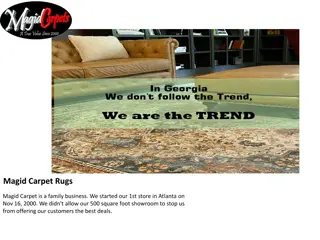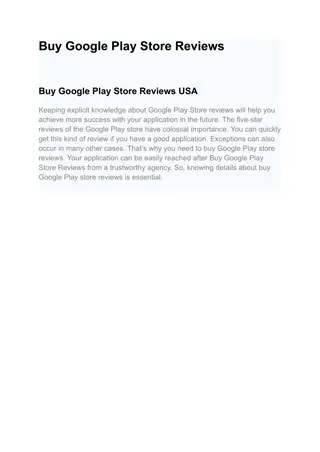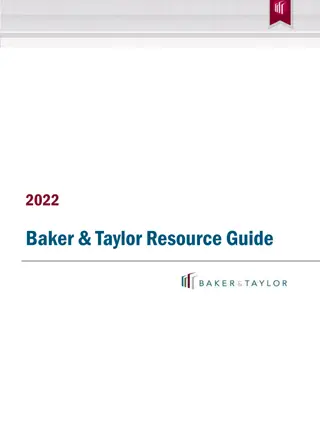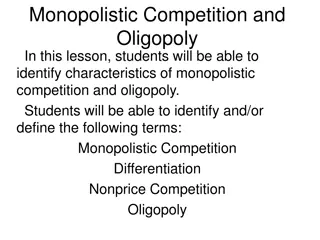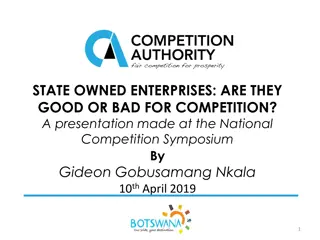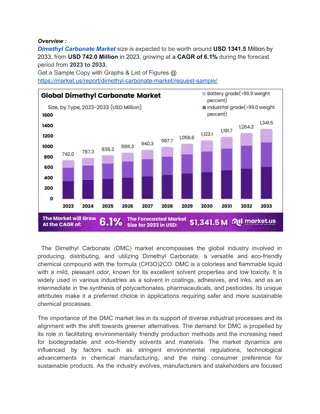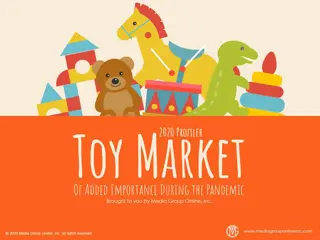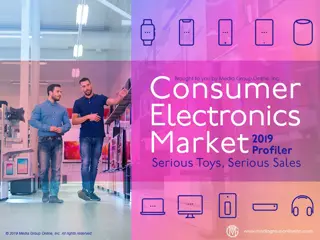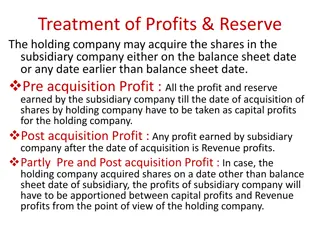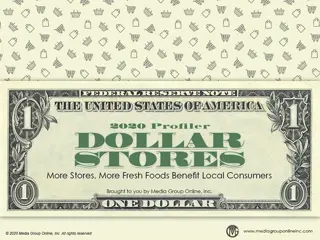Convenience Store Industry Trends: A Look at Sales, Profits, and Competition
The convenience store industry experienced substantial growth in 2017, with record sales and profits. However, despite positive performance in 2018, increased competition from tech-savvy rivals like Amazon poses challenges for traditional players. As top C-stores outpace the bottom performers, the sector is adapting by investing in technology to stay competitive.
Download Presentation

Please find below an Image/Link to download the presentation.
The content on the website is provided AS IS for your information and personal use only. It may not be sold, licensed, or shared on other websites without obtaining consent from the author. Download presentation by click this link. If you encounter any issues during the download, it is possible that the publisher has removed the file from their server.
E N D
Presentation Transcript
A Big Increase in 2017 Sales and Profits According to the latest annual data from the National Association of Convenience Stores (NACS), 2017 was another record year, with total retail sales of $601.1 billion, a 9.3% increase from 2016, and pretax profits of $10.4 billion, a 1.6% increase from 2016. The total store count increased only marginally, from 154,535 at the end of 2016 to 154,958 at the end of 2017. Total 2017 inside sales were $237.0 billion, increasing just 1.7%. Fuel sales increased 14.9% to $364.1 billion, but because of the volatility of the fuel market, sales are likely to be less for 2018 and into 2019, as the current oil market has decreased significantly.
Top 25 C-Stores Outpace Bottom 25 Despite the generally rosy picture for the C-store industry, it is increasingly becoming two very different segments of businesses, as the top 25% of all stores had a 2017 store-operating profit 9.1 times larger than the bottom 25. The gap in EBITDA (earnings before interest, taxes, depreciation and amortization) was even more pronounced, with the top quartile 10.2 times more than the bottom quartile, or $39,415 and $3,881, respectively. The top quartile sold 2.1 times more motor fuel than the bottom quartile, 1.7 times more merchandise sales and 4.2 times more foodservice sales.
2018 Continues Positive Performance Despite Concerns With a good 2017 in the rearview mirror, 79% of C- store retailers said their in-store sales increased and 56% said their fuel sales increased during the first half of 2018, compared to the first half of 2017, according to the NACS July 2018 survey. The good numbers continued in the NACS s September 2018 survey, with 72% of C-store retailers reporting an in-store sales increase and 52% a fuel sales increase for the first 9 months of the year, compared to January September 2017. The numbers from the NACS December 2018 survey were even better: 84% of C-store retailers had an increase of in-store sales and 62% an increase of fuels gallons sold for the entire year, resulting in 85% of retailers being optimistic about their Q1 2019 sales.
C-Store Competitors on the Attack Although the increase in the number of c-stores from 2007 to 2017 is second only to dollar stores, c-stores are about to face new competitors and traditional ones sporting new technologies that could negatively impact the industry and/or force it to change. Clearly, the greatest potential for disruptive competition could come from Amazon. Its Amazon-Go-store concept is forecast to increase to 3,000 more stores by 2021 and it could also sell the store s technology to other retailers, creating more competition. 7-Eleven, the industry s largest chain, isn t waiting to be overwhelmed. During November 2018, it started testing scan-and-go technology seamlessly integrated into its mobile app at 14 Dallas stores.
C-Stores Respond to Competition with More Tech Investments With an increasing number of competitors wielding digital retail weapons, 61.8% of c-stores were forecast to increase and only 9.7% to decrease their 2018 tech investments, according to Convenience Store News 2018 Technology Study. As referenced on page 2 of the Profiler, the introduction of digital payment systems will be where much of the competition occurs. The study found 41.6% of c-stores have implemented in-store mobile payment apps, and 35.9% at the pump. There was a slight increase in c-stores utilizing social media as part of their marketing program, 73.3%, 2017, and 76.0%, 2018, and mobile apps for consumers increased from 41.4% to 46.2%, although loyalty programs decreased from 57.3% to 54.4%.
Defending Against Disruptive Trends C-store competition is not just coming from advanced technologies, but also new collaborations, such as Kroger and Walgreen, announcing during December 2018 the addition of Kroger mini-food stores in 13 Walgreen locations in northern Kentucky. Although smart speakers are one of the newest consumer tech products, 20% of the merchandise ordered via these devices are grocery items, which will only increase as 55% of homes are expected to have smart speakers by 2022. Multiple vehicle technologies are likely to effect convenience stores: more electric vehicles mean less gasoline sales and the increasing use of Uber and Lyft means fewer private passenger car miles and fuel purchases.
Advertising Strategies With c-stores traditional customer base of lower- income households experiencing stagnant wage growth and disposable income, stores located in those neighborhoods must offer more value- priced merchandise to maintain, and even gain, a share of disposable incomes. Promote a discount program to the employees of small, neighborhood businesses, offering special prices for breakfast and lunch items. This could be a perk that helps these small businesses attract and retain employees and convert them into regular c-store customers. C-store owners must educate themselves about the momentum towards electric vehicles, so they are prepared to add charging stations and find the right balance between those vehicle owners and the remaining motor-fuel customers.
New Media Strategies Stories, especially in video form, continue to increase in interest and use among consumers. C- stores have an opportunity to engage with consumers by asking them to share their business and leisure travel stories to encourage more car travel and c-store visits. Implement or expand a text-messaging program to inform customers of daily specials available only to those participating in the program. Use social media posts of short videos with employee appearing on-camera introducing/ explaining new products and/or services, including pump-tech upgrades, healthier food choices and other enhancements that reduce the time customers must spend in the store.


